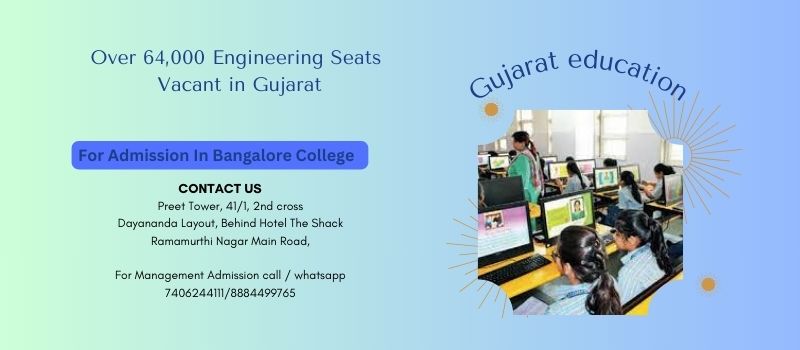In a significant revelation that has put the spotlight on the state of technical education in Gujarat, the state government disclosed in the assembly that over 64,000 engineering seats remained vacant in 2023. This startling figure was presented by the Gujarat State and Technical Education Minister, Rushikesh Patel, in response to questions raised by Congress MLAs, highlighting a growing concern in the region’s educational sector.
Despite engineering being one of the most sought-after courses in India, Gujarat paints a different picture, with a substantial number of both degree and diploma engineering seats going unclaimed. The data indicated that out of 140,852 engineering seats available across various government-run, aided, and self-financed colleges in Gujarat, 38,811 degree engineering seats and 23,501 diploma engineering seats remained vacant in 2023. This scenario is not limited to engineering alone; MBA and MCA courses in the state also witnessed a vacancy rate of over 32%, with 7,742 seats unfilled.
The minister elaborated that the overall filled seats amounted to 78,546, representing only 55.76% of the total available seats, leaving a vacancy of 44.23%. This considerable gap underscores a broader issue within the state’s approach to technical education and its alignment with student interests and industry demands.
A significant factor contributing to this trend is the preference of students for premier institutions like IITs, NITs, and other top colleges in India or even pursuing their studies abroad. This preference suggests a perception issue with the state’s colleges or perhaps a mismatch between the curriculum offered and the evolving needs of the global job market.
The situation in Gujarat calls for a critical evaluation of the technical education framework, including curriculum updates, better industry-academia partnerships, and more robust career guidance for students. There is a pressing need to make engineering and other technical courses more appealing and relevant to today’s students, who are looking beyond traditional education pathways to build their careers.
This vacancy crisis also opens up a dialogue about the future of technical education in Gujarat and the need for innovative solutions to bridge the gap between available seats and student enrollment. It’s an opportunity for educational institutions, policymakers, and industry leaders to come together and revamp the technical education landscape in Gujarat, ensuring that it not only meets the aspirational needs of its youth but also aligns with the dynamic demands of the modern workforce.
